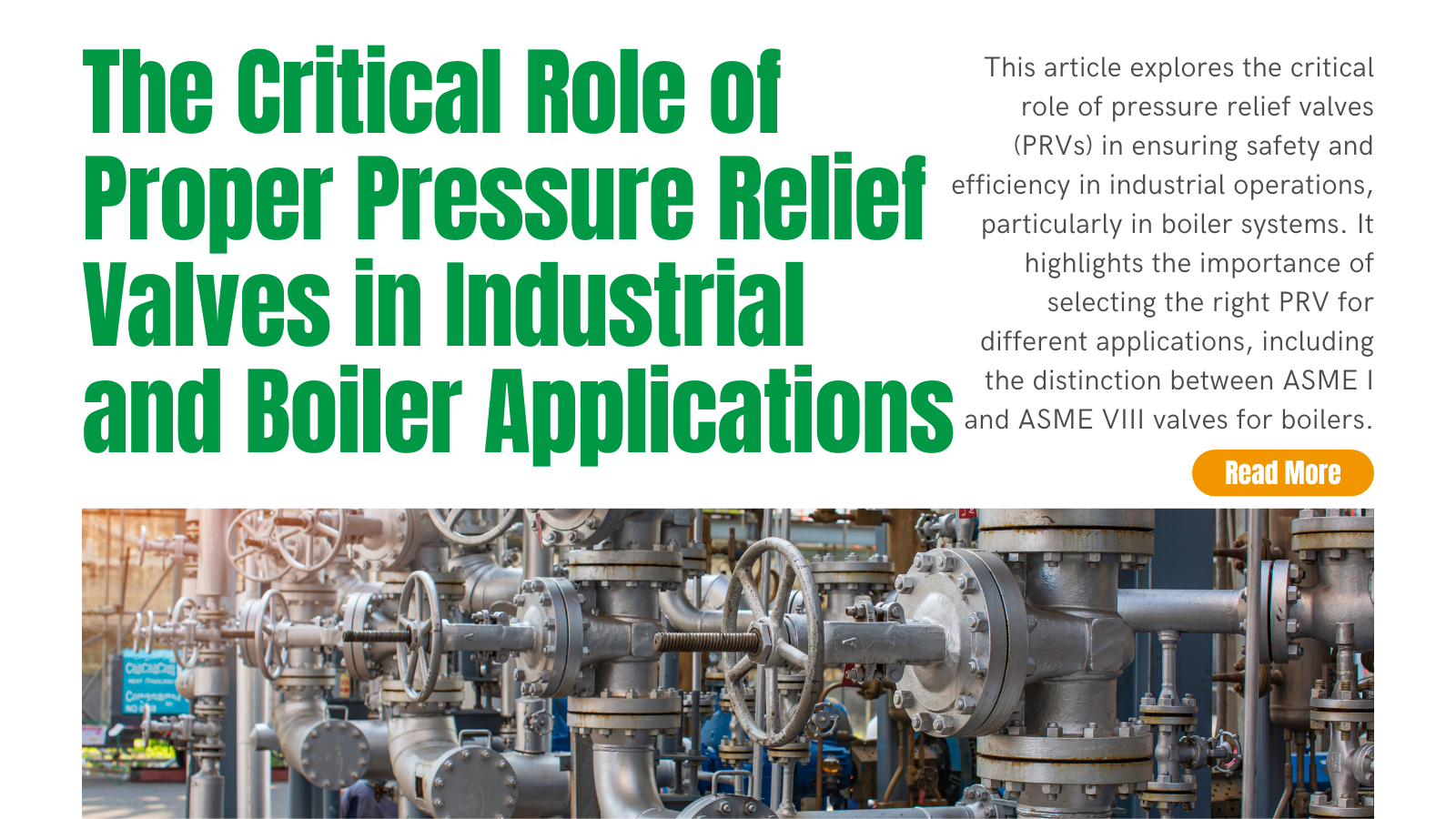Ensuring Safety and Efficiency: The Critical Role of Proper Pressure Relief Valves in Industrial and Boiler Applications

In the fast-paced world of industrial operations, safety and efficiency are non-negotiable. Central to maintaining these standards is the proper selection, installation, and maintenance of pressure relief valves (PRVs). These valves play an indispensable role in preventing catastrophic failures by releasing excess pressure from high-pressure systems, including those in boilers. This article delves into the critical importance of PRVs in industrial processes, with a special focus on their application in boiler systems.
The Significance of Pressure Relief Valves
Pressure relief valves are designed to act as safety devices, ensuring that the pressure within a system remains within safe limits. Whether in chemical plants, oil refineries, manufacturing facilities, or boilers, PRVs prevent equipment failure, explosions, and potentially devastating accidents by providing a controlled release of excess pressure. This controlled release not only safeguards equipment but also protects personnel from the dangers of overpressure scenarios.
The importance of PRVs extends beyond safety; they also contribute significantly to the overall productivity and profitability of industrial operations. When pressure relief systems are correctly installed and maintained, they help minimize production interruptions, reduce maintenance costs, and ensure the continuity of critical processes. This, in turn, leads to increased output, reduced downtime, and enhanced profitability.
Understanding the Types and Functionality of PRVs
Pressure relief valves come in various types, each designed to meet the specific needs of different industrial applications. Common types include safety relief valves, pressure safety valves (PSVs), pilot-operated relief valves, rupture discs, and vacuum relief valves. Each type has unique characteristics suited for specific applications, and understanding these differences is essential for selecting the appropriate solution.
PRVs are designed to open and release excess pressure when system pressure exceeds a predetermined set point. This set point is usually based on the system's maximum allowable working pressure (MAWP). Once the pressure rises above this set point, the PRV opens, allowing excess pressure to escape and preventing the system from reaching dangerous levels.
The Critical Distinction in Boiler Applications: ASME I vs. ASME VIII Valves
A critical yet often overlooked issue in industrial operations is the selection of the appropriate PRV for boiler systems. Boilers operate under extreme conditions, and selecting a PRV that can handle these conditions is crucial. In particular, it is vital to differentiate between ASME I and ASME VIII PRVs.
ASME Section I valves are specifically designed for boilers, which operate at higher pressures and temperatures. In contrast, ASME Section VIII valves are intended for non-boiler pressure vessels, such as storage tanks and reactors. Using an ASME VIII PRV on an ASME I boiler can lead to significant safety risks, including inadequate pressure relief, which could result in boiler overpressure, explosions, and severe equipment damage. The correct application of ASME I PRVs in boilers is essential for maintaining safe operations.
Key Considerations in PRV Selection, Installation, and Maintenance
Selecting the right PRV for an industrial application requires careful consideration of factors such as pressure rating, flow capacity, material compatibility, and compliance with regulatory standards. In boiler applications, this selection process becomes even more critical, given the extreme conditions under which boilers operate.
Proper installation and regular maintenance of PRVs are also crucial for ensuring their reliable and effective performance. PRVs must be positioned correctly within the system to ensure optimal performance. Regular maintenance, including periodic inspections, functional testing, and component replacement, is necessary to maintain the PRV's operational integrity. Neglecting these tasks can lead to issues such as valve leakage, failure to open or close properly, and premature or unexpected valve opening.
Regulations and Standards Governing PRVs
Pressure relief valves are subject to various regulations and standards aimed at ensuring their safe and effective performance in industrial applications. The American Society of Mechanical Engineers (ASME) Boiler and Pressure Vessel Code, Section VIII, Division 1, is one of the most widely recognized standards for PRVs. Compliance with this code and other industry-specific regulations, such as the European Pressure Equipment Directive (PED), is essential for maintaining safety and avoiding legal or financial penalties.
Conclusion: Prioritizing Safety and Efficiency with Proper PRVs
In industrial and boiler applications, the importance of proper pressure relief valves cannot be overstated. These critical components serve as the first line of defense against the dangers of excessive pressure buildup, protecting both personnel and equipment from potentially devastating consequences. By understanding the significance of PRVs, selecting the appropriate valve for each application, and adhering to best practices in installation and maintenance, industrial operators can enhance the safety, efficiency, and profitability of their operations. In a world where safety must always come first, the right PRV is an indispensable ally in achieving that goal.
